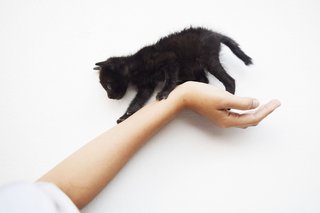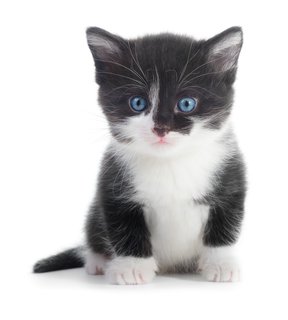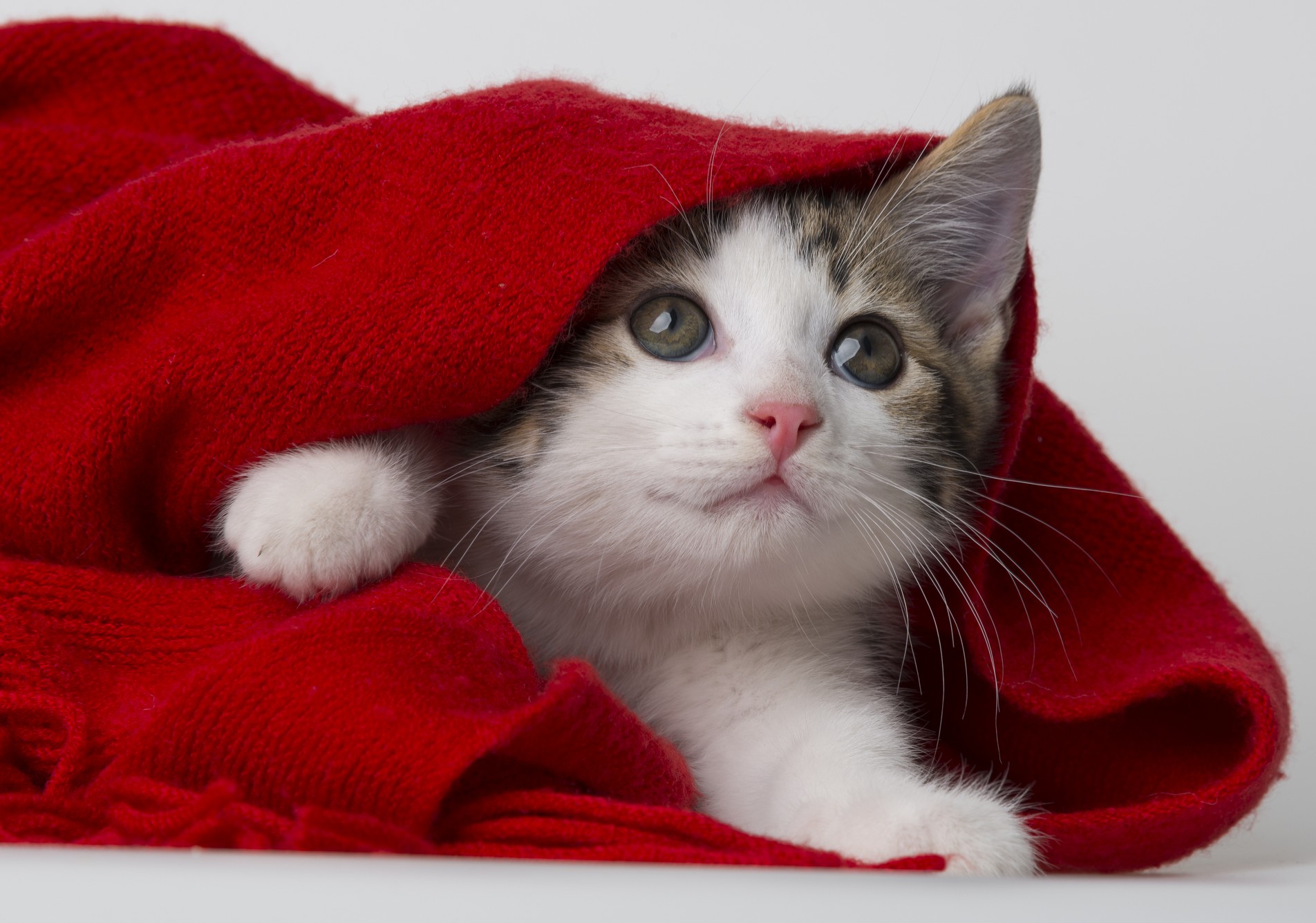How to feed a kitten
Feeding newborns

For the first seven to ten days of life, the newborn kitten’s eyes remain closed. Yet during that time, kittens double their birth weight and become increasingly more active. Always allow the kitten to get the colostrum (the antibody-rich first milk from the mother), which give him protection on his first months of life, and if possible, never wean the kitten before 3-4 weeks of age, since he is still getting some local intestinal protection from the mother’s milk. The typical introduction of a kitten to solid food (around 3 to 4 weeks of age) usually amounts to the kitten romping around and through the female's food bowl, and licking moistened dry food from its paws. Kitten traffic will tend to compact the food, so stirring the compacted diet or offering fresh amounts periodically should be considered. By six weeks of age, most kittens are ready to be weaned. If they have started to eat solid foods from the female's dish, it is not unusual for kittens to begin to wean themselves at about four to five weeks of age.
Feeding kittens

Research shows that a kitten grows from infancy to young adulthood in approximately one year, and during its first 20 weeks a kitten can increase its birth weight 20 times. At 26 weeks of age, the growth rate starts to level off. However, kittens continue to develop inside with normal growth ending at about 12 months of age. Kittens also require about twice the energy of adult cats.
Kittens require higher levels of protein than puppies, and also have a unique requirement for the free amino acid taurine. Lack of sufficient taurine in a kitten's diet could result in impaired vision. They also need essential fatty acids as linoleic an araquidonic acids. For these and other reasons, it is recommended that kittens be fed only foods developed for kittens. When a nutritionally complete and balanced food is offered to a normal, healthy kitten, supplementing the diet with vitamins and minerals is not necessary.
It is recommended that kittens be fed two to three times a day during this period of rapid growth, and many owners make food available at all times along with a source of fresh, clean water. Dry food can be moistened with warm water to help soften the food and make it easier to eat. Moistened dry food or canned food left at room temperature can become unpalatable and may even spoil if left out for several hours. Uneaten portions should be removed and discarded after one hour. As with other animals, any diet changes should be made gradually over a 7 to 10 day period to avoid causing digestive upset.
Kittens tend to be "occasional" eaters as they take a large number of small meals throughout the day. Normally the kitten approaches the food, sniffs it quickly and then starts to eat. After consuming a small portion of the food, the kitten leaves and returns at various intervals to eat. This behaviour should not be confused with a reluctance or refusal to eat. Too much noise, new surroundings, the cleanliness of food/water dishes may all be factors to consider if a kitten refuses to eat. If food refusal is prolonged and/or the kitten shows signs of illness such as listlessness, diarrhoea, repeated vomiting, discharge from the eyes or nose, straining to urinate or constipation, or unusual hiding in dark places, a veterinarian should be consulted at once.

From six months to one year, kittens should be fed twice a day if they are fed a canned, soft-moist, or moistened dry food. Dry food can be fed freely, filling the bowl with a sufficient quantity of food once each day. However, overfeeding should be avoided. Kittens should be fed as individuals, and amounts to feed will depend upon activity and body condition. It's a good idea to start with amounts recommended on the package label, and to use this information as a guide. Adjust the amount fed to obtain a healthy body condition. A veterinarian can help the owner assess the cat's body condition and, if necessary, help plan an appropriate weight reduction program.
Cats, like people, have individual food preferences. Kittens from the same litter may acquire different tastes and eating habits. However, the cat's reputation for being a finicky eater is usually the result of feeding practices established by the owner. The more variety a cat is offered, the more variety it will expect. With the wide choice of commercial cat foods, it is easy to provide a nutritionally complete and balanced diet that a cat will eat.
If you feed your cat with a complete, well-balanced diet, he or she will have all the ingredients necessary to be healthy and will not need additional supplements.
Thinking about your kitten’s needs, 1st Choice has developed a complete Kitten, Healthy Start Chicken formula of high quality for the growing period of your favourite pet. It is perfectly adapted to meet the specific requirements of kittens and make them feel and look incredible.









